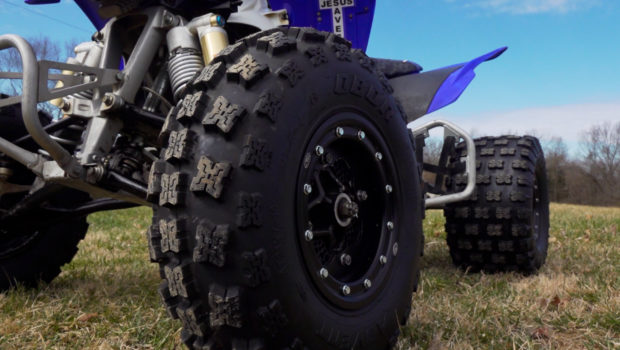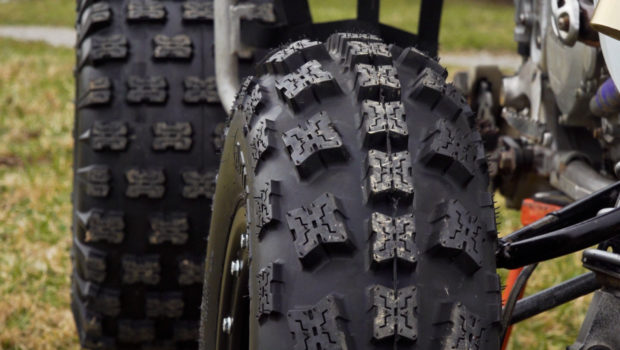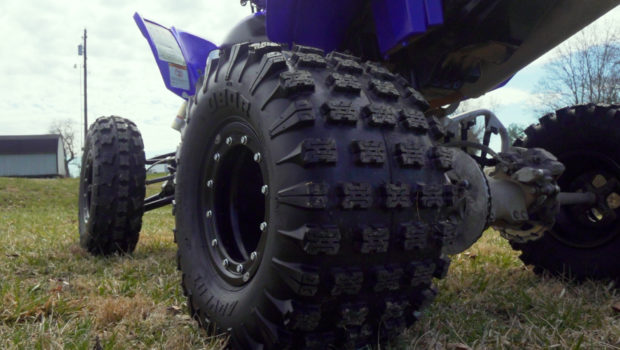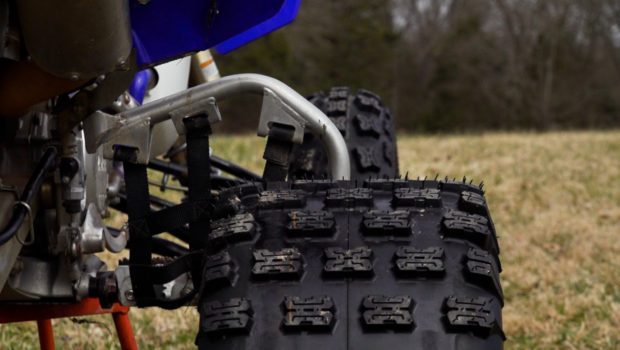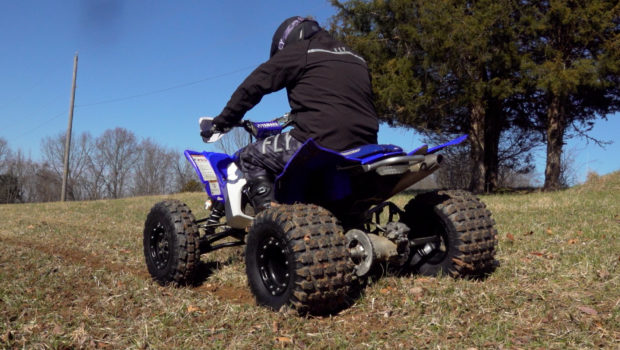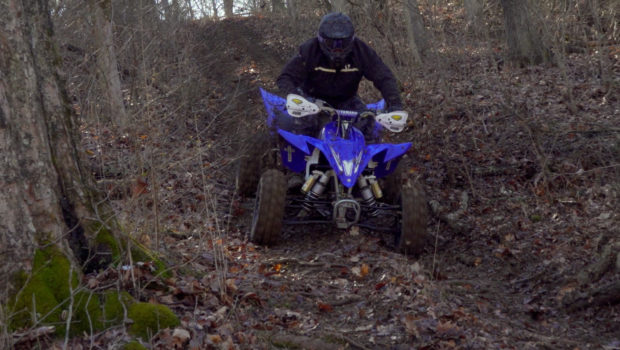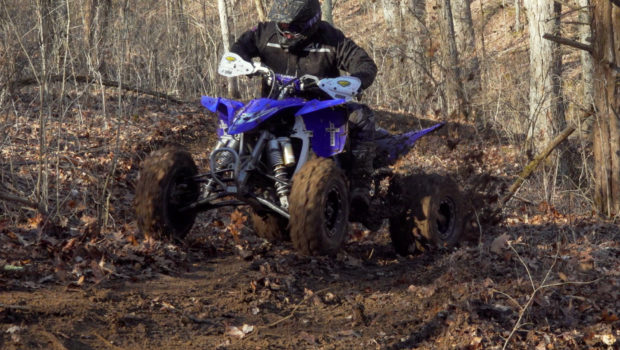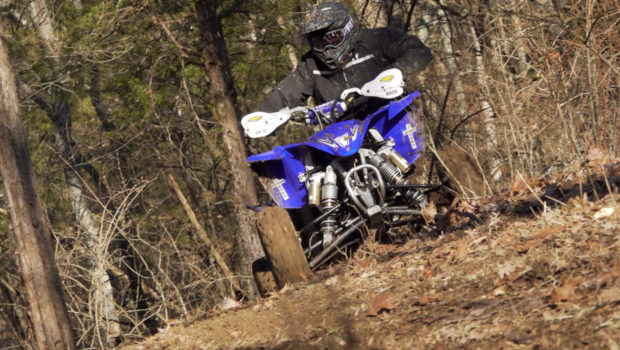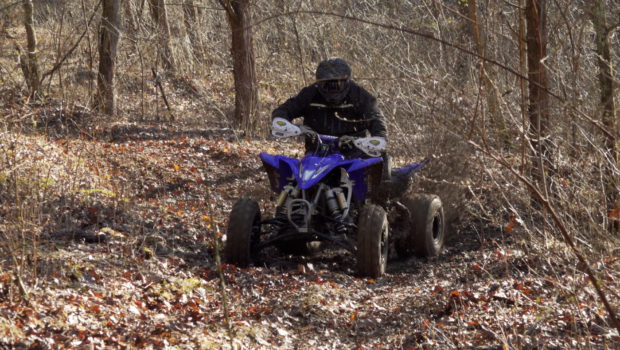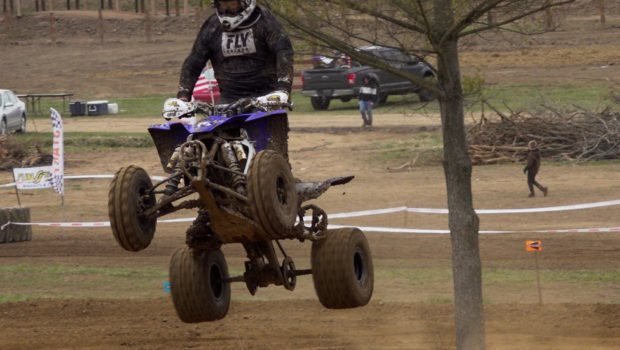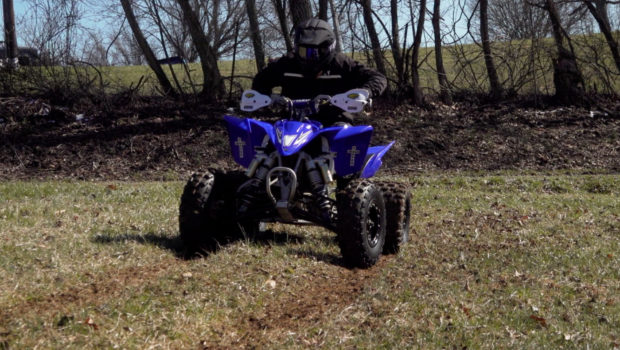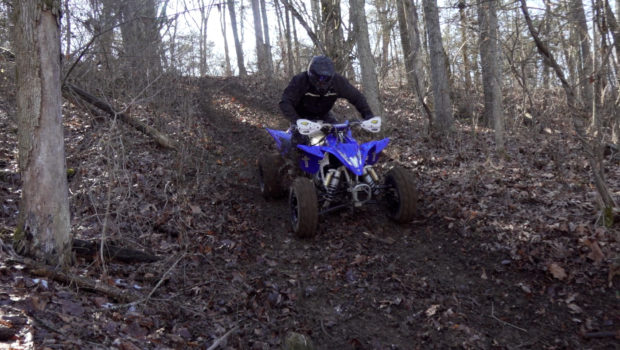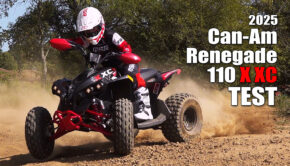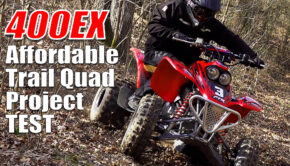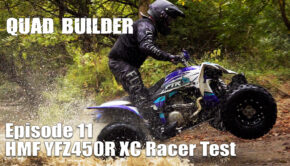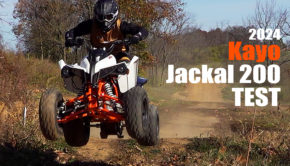Published on June 6th, 2022 | by Joe
OBOR Advent Sport ATV Tire Test Review
Obor Advent Tires Test Rating
Summary: As a tire we received with a mixture of skepticism and enthusiasm from our staff, Obor Advent tires perform well in varying trail conditions. A reasonable retail price and long wear life also make them a great value. Whether we’re simply riding or racing our sport quad, the Obor Advent is already a proven winner if you ask us.
4.25
3 Ride Test
Looking to meet the needs of ATV and SXS racers, Obor tires entered the market in 2019. They enjoyed immediate success in racing, winning Pro 4×4 GNCC championships with Landon Wolfe in 2019, 20, and 21. Hannah Hunter won her second consecutive WXC GNCC Pro Women’s championship her first year racing Obor tires in 2021. They’ve also enjoyed success in the SXS segment with Mike Cafro winning the SCORE International Pro Stock UTV Championship for 2021.
Long time Pro GNCC Racer and former Factory KTM rider, Adam McGill, is the man responsible for much of the testing and developing of Obor’s Advent line of sport ATV tires. Used by select pro cross-country racers in 2019, the Obor Advent, Advent S, and Advent MX tires were released to the public in 2020. With the Advent MX coming in smaller motocross specific sizes, Obor’s Advent and Advent S are their tires of choice for trail riding or cross-country racing.
Based on our extensive testing experience, Obor reached out asking if we could provide you with our opinion on how a set of their Advent tires perform. We figured with the success they’re having in racing, they’re certainly worth trying out.
Construction
Featuring a 6-ply bias ply design, the Advents have a pretty standard profile up front, choosing a relatively flat profile out back. As an all condition tire, the Advent features a pretty standard 15/32 of an inch tread depth rear with a deeper 19/32 of an inch tread depth up front. They have a slightly different take on the popular H knob tread pattern used for some time now. The knobs are a bit more rectangular in shape than the more square shape knobs used by others. Cutouts on the top, bottom, and sides aren’t quite as deep on the Advents. The knob surface is siped for increased traction in hardpack, leaving plenty of room to groove the knobs should you choose. The ends of the knobs on the front tires all curve inward, while the rear tires’ knobs curve inward on the ends facing the outside of the tires, pointing outward on the sides facing the center of the tire.
The front tires feature a narrow row of knobs running down the center for smooth rolling while providing a center edge for traction in sandy or loamy corners. There’s two rows of wider spaced knobs on either side with angled knobs on the first row out. While they’re a directional tire, some riders run them backwards based on condition or how they might have them grooved. We tried them both ways and had best results with the standard direction.
The rear tires alternate between two and three center knobs with sizable side knobs that wrap around the sides of the tires for added traction and protection. They’re non-directional, allowing them to be rotated for more even wear and a longer tread life.
Both the Advent and the Advent S are available in 21, 22, and 23-inch tall fronts for 10-inch rims. The rear Advents are available in 20 and 22-inch heights for 9-inch rims. They also have 20-inch versions for 8-inch rims. Sharing an identical tread pattern. The Advent S is Obor’s competition spec tire for cross-country racing featuring a softer rubber compound for added traction.
Both Hannah Hunter and Adam McGill often race the harder compound Advent as the rear tires are a little easier to slide around in high traction conditions. They both feel the Advent S is best suited for mud races or tracks with lots of wet rocks.
The Test
Handling our testing is A Class cross-country racer, Evan Hartzel, decked out in apparel from Fly Racing. We outfitted a Yamaha YFZ450R with a new set of Obor Advent tires, 21×7-10 front and 20×11-9 rear, mounted on beadlock wheels.
Our testing took place over three days. Day 1, we filmed on one of Evan’s top-secret private XC practice facilities in wet conditions varying from tacky to slick mud. Day 2 and 3 were racing the A class at two Xtreme Cross Country Race series events held in Southwest Ohio.
Adam McGill typically runs 4 pounds rear and 6 pounds front with Tire a Blocks’ run flat system providing added support. With no run flat system in our tires, we did most of our testing with 7 pounds front and 5 pounds rear. We felt this provided the ideal balance of predictability, grip, feel, and adequate flat protection.
Testing began with a series of holeshot runs on the same line allowing us to experience how the rear Advent tires launched off the line on grass and dirt conditions that changed a bit with each run. We found the back tires to hook up very well consistently throughout our runs with the gas on and minimal clutch control needed off the line.
The Advent rear tires did well powering their way up hills in everything from hardpack to soft, slick mud. The hard compound tires were also respectable at finding traction in wet creek rocks.
The rear tires typically provide good predictable traction under braking. However, a flatter profile and shorter rear knobs lead to the back tires packing up and sliding a bit more in the mud. The moment you crack the gas, though, the Advent tires do well at cleaning out and restoring forward drive.
Up front, directional control was precise and impressive throughout our testing. Driving into, through, and out of turns, the front tires hooked up consistently. The front Advent’s taller knobs helped keep front-end traction consistent under braking. Rarely did the front end break loose unexpectedly.
We really enjoyed the Advent Tires’ cornering manners throughout most of our testing, due to the front end’s precise control and the back end’s balance between grip and sliding predictability. However, when things dry up a bit and the ground provides optimum traction, even the hard compound Advent tires make you work pretty hard to break the back end loose. It’s great if your railing berms, but it makes it harder to powerslide or square off a turn to take the inside line. In high traction conditions, those riding 450cc and larger ATVs will find it easier to slide the rear Advent tires around.
As impressive as they are, we’re told grooving the Advent rear tires like Hannah Hunter and Adam McGill helps loosen up the back end for slides in high traction conditions while further enhancing their forward traction in slick, hard packed conditions. Honestly, we wouldn’t hesitate to race them stock right out of the box. We did, actually, and we won twice.
Based on the amount of wear that we’ve racked up so far, we’d expect to give them another race or two before we turn the rear tires around. We’d expect to easily get a half season or more out of a set of rears given any unforeseen cuts or punctures. So far we have none to report.
Conclusion
As a tire we received with a mixture of skepticism and enthusiasm from our staff, the bad news is that the other premium tire brands have a new competitor that should be taken pretty seriously. The good news for enthusiasts is that Obor Advent tires perform well in varying trail conditions. A reasonable retail price and long wear life also make them a great value. Whether we’re simply riding or racing our sport quad, the Obor Advent is already a proven winner if you ask us.

